Problem displaying Facebook posts. Backup cache in use.
Click to show error
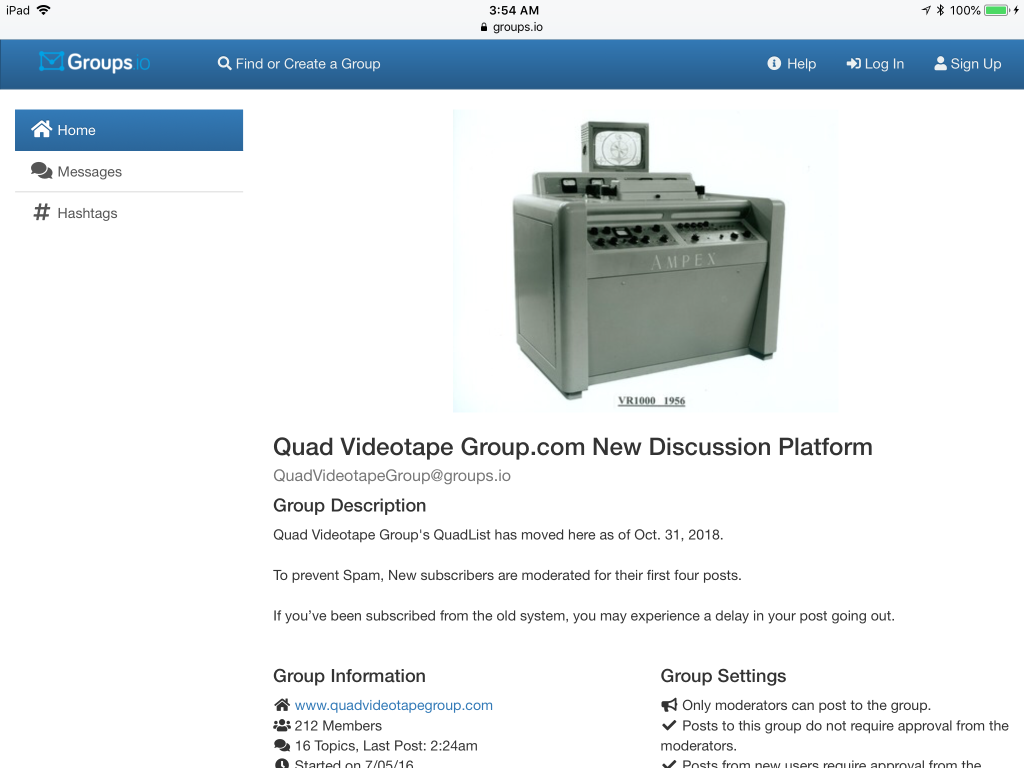
After 10 years on the MailMan platform, the QuadList has a new home:: Click on QuadList—NEW PLATFORM.
You’ll be taken to our new platform where you can join the discussion and view messages posted beginning in October, 2018.
You can check out the July 2008-October, 2018 ARCHIVES from our previous E-Mail List platform. 8.
This mailing list is focused on 2″ Quadruplex Videotape:
Recorders, Recording, Playback, Maintenance, Equipment Design and Tape Preservation, and the Preservation of Knowledge about these subjects so that knowledge can be used by new people to preserve the content contained on Quad tapes.
Historical stories or personal recollections are welcome. Please put the word “Story” at the beginning of the subject line.
Trim replies to relevant information so that we don’t have Loooong posts of info folks have already read. Thanks!
You can also check out our Facebook page:
https://facebook.com/QuadVideotapeGroup/
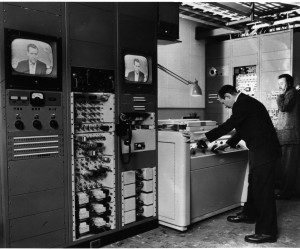
Did Edwards report the first use of videotape by the network?
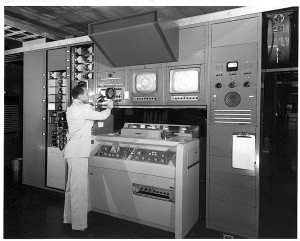
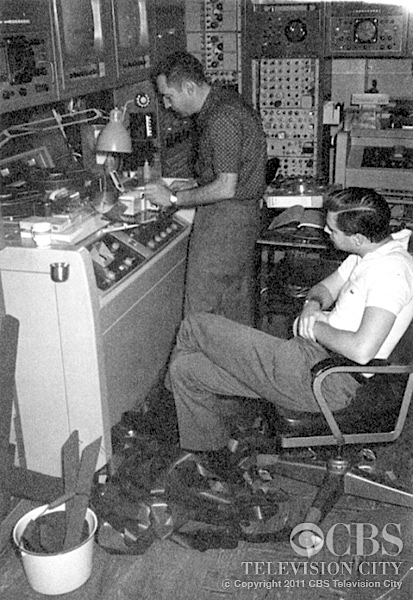
Ted
Quad Videotape Group at Association of Moving Image Archivists Conference, Savannah, Georgia, Nov. 11-15, 2008
Tuesday Night Dinner
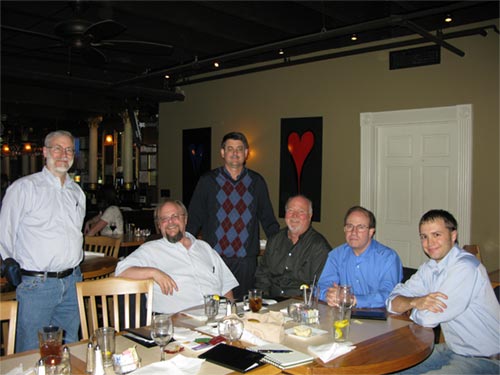
Ted Langdell, flashscan8.us, Cliff Hasenbalg, Moving Image, LLC, Colorist Bob Campbell, Pat Shevlin, Dir. of Engineering, The Media Preserve, Jon-Erik Gilot, Sales, The Media Preserve/Preservation Technologies.
Photo: Linda Adams
Members of the Quad Videotape Group enjoyed food and conversation after Tuesday sessions or sightseeing at Isaac’s on Drayton restaurant in downtown Savannah, GA.
Most of the group gathered in the flashscan8.us suite-Rm. 532 at the Marriott. While there, they got a look at theflashstransfer Ted was prepping for the Thurs-Fri Vendor Cafe.
Wednesday Night Dinner
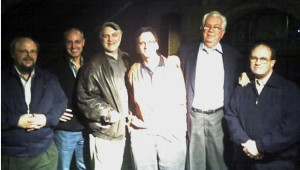
Photo: Bystander w/Ted’s cell phone
Quad Videotape Group members went to a different restaurant in Savannah just as it was closing, but talked their way in to a good meal.
Seated around a table like “Meet the Press,” they kept a close ear on Myron Lenenski playing Tim Russert with Pat Shevlin as the guest.
AMIA Booth Setup
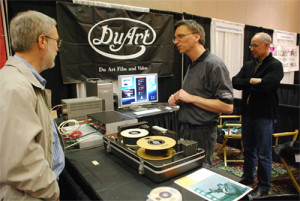
Photo: Ted Langdell
A Quad was present at the Vendor Cafe, shipped in from New York City.
As the song goes, “Something happened along the way…” causing DuArt Chief Engineer Maurice Schecter to spend several hours with tweaker in hand.
The Ampex VR-3000 portable did make a picture, but not to member Maurice’s satisfaction.
An Ampex playback processor was used, along with a digital TBC to recover an upstate New York NBC affiliate’s off-network recording of Billy Joel on Saturday Night Live.
De-pinking film
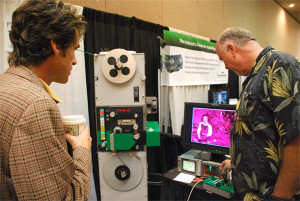
Photo: Ted Langdell
In the flashscan8.us booth, Colorist and Quad Videotape Group member Bob Campbell demonstrates some techniques for de-pinking film using the 16mmflashtransfer’s color correction tools during the Vendor Cafe.
Visual/Allen, Quad VTRs and the Bosch connection
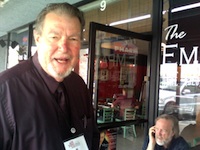
As told by Al Sturm, June 2009 in a series of e-mails to Quad Videotape Group Secretary Ted Langdell
I’ll try to do a chronology of Allen/Visual/Fernseh (Bosch) association from the period of 1965-1970.
Steve Allen was a sharp video entrepreneur who from the early days of Quad was able to come up with accessories to improve the operation of the Quad machines.
Among some of the products were:
A very early manual Amtec. This was a time in electronic state of the art when transistors were first being used in video design.
They built a solid state switcher, and an improved limiter low band demod. This was about the time of the VR-1000B.
Their next project was to replace the tube servo.
Steve had two sharp engineers working with him, Clarence Boice (ex Philco), and Dick Silver (Stanford student) who were the “power behind the throne.” They were very innovative for the time.
Steve had friends at Ampex, and learned of a problem that it was difficult to obtain quality variable delay lines for Amtecs. It was very difficult matching the varicaps and holding tolerance on the wound inductors. They then started building and selling them to Ampex.
They also built balanced output filters for the VR-1000C demod, which Ampex used.
Simultaneously, Visual Electronics was a primarily a rep company for broadcast TV equipment.
Jim Tharpe—Visual’s president—was involved in TV all the way back to the DuMont days.
One of his coups was to become the sole US importer for the Philips Plumbicon cameras. This was about the time when color hit so they were the “only show in town.” Among products Visual sold were the accessories from Allen Electronics.
In 1964 when the VR-2000 was introduced. High Band became the standard for broadcasters.
Jim Tharpe was intrigued with Allen and thought they could build a competing high band system due to their experience with signal systems. He then bought Steve Allen out.
The problem turned out to much harder to solve than Visual was led to believe. Among the problems were:
Number 1: Understanding Charlie Ginsburg’s high band patent, and
Number 2. Designing a high band signal system that didn’t infringe the Ampex patent.
Along with Clarence Boice and Steve Allen, Visual brought in engineers from France, Germany, and New York to solve the problems.
This is when I went to work for Visual because of my field engineering background with Ampex. My job title was “Jack of all trades” trying to be a go between with Visual, Allen, and customers. I ended up being somewhat of a “fire fighter”.
They had some success. As a result Visual put together a VTR using the VR-1000 console and monitor rack with a solid state H-locked servo, signal system utilizing the MK10 head, Amtec, and Colortec.
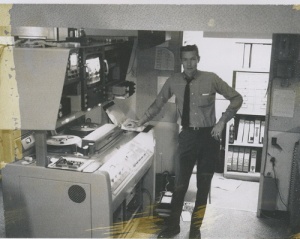
That’s me with my “AJ squared away” crew cut.
Because of the buyout of all the Ampex equipment, Ampex wasn’t too concerned with the competition.
A number of the “Allenized” machines were sold by Visual Electronics.
Some customers were: Corinthian Broadcasting (then a subsidiary of Dun and Bradstreet,) NBC New York for their time delay, and a number of educational and religious broadcasters.
(Quad Videotape Group Secretary Ted Langdell notes that in 1977, an Allenized VR-1000 was still in use at Corinthinan’s KXTV, 10, Sacramento, often recording the first feed of CBS Evening News with Walter Cronkite for “cherry-picking” stories, and other feed duties.)
The Visual/Allen machine at KXTV was from a purchase made by George Jacobs, Director of Engineering for the Corinthian stations. KOTV Tulsa was another. The president of Visual Electronics Jim Tharpe and George were good friend from their past DuMont days.
The next step by Visual was to build their own VTR.
Tharpe had contacts in Germany with Fernseh who had a monochrome VTR with their own air bearing heads.
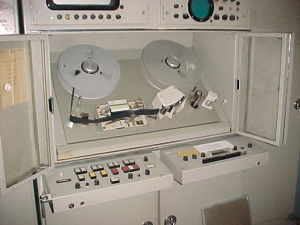
An association was formed between Fernseh and Visual.
Fernseh supplied frame, transport, and heads to Visual who built a high band signal system, motor controls, and servo from the Allen electronics to compete with Ampex.
I was in Darmstadt, Germany many times during the development and know quite a bit about their products.
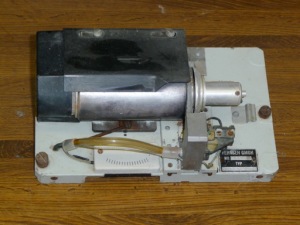
The Fernsh head was very good. It had some good features, one of which was linear bearings for the guide.
It was very repeatable and positive.
Visual then made and marketed a machine called the VA50.
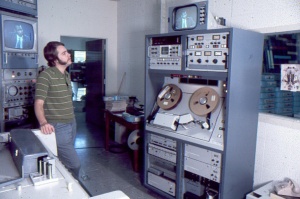
The VA-50 was a striped down version of the VA-100.
I frankly can’t remember what was left off.
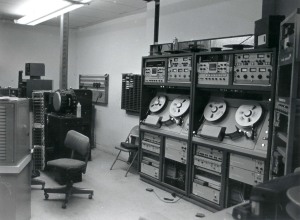
It had limited success.
The problem was with all the design engineering, field engineering, and buyout items from Ampex and Fernseh costs, profit margins were very slim.
Pricing was around $45,000.00 for the VA-50 and $55,000.00 for the VA-100.
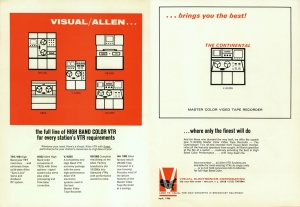
Visual was having other financial problems so they shut the VTR project down.
This is when John Streets and I started Merlin (Merlin Engineering Works) by buying out all the excess inventory from Visual.
We then started refurbishing and reselling VR-2000’s , VR-1200’s, building our own high band signal system and offered high band kits for older machines.
This is the story to the best of my recollection.
Al Sturm
Sturm passed away April 22, 2013 at his home in San Jose, California. Al was 78, and had been working on a new TBC project until shortly before his passing.
TL notes that Visual/Allen’s 1966 catalog advised that it could convert RCA TRT series tube-type machines to all solid-state high band/all band versions, and could do the same for RCA’s TR-22 solid state machines, which were initially low-band only when introduced before Ampex introduced high band in 1964.
It rebuilt Ampex’s tube-based VR-1000s as transistorized High Band units, and used the VR-1000 transport in a new housing to offer most of the high-end features offered by uThe Visual/Allen 100G “Master Color Video Tape Recorder.”
Quad Videotape Group members and friends are invited to gather for food and stories in Savanna, Georgia at the Sixth Annual Quad Videotape Group Dinner at AMIA (The Association of Moving Image Archivists.)
This is an continuation of our ongoing lunches at NAB and Dinners at AMIA and in August, the first Dinner at SAA (The Society of American Archivists.)
We’ll be gathering on Tuesday, Oct. 7 at 7 pm in the:
Hyatt Regency Savannah
2 W Bay St. , Savannah, GA 31401
Look for the Quad Reel on a table to find us.
There are restaurants in the hotel, and nearby within easy walking distance as we found at AMIA 2008 in Savannah.
Dining suggestions welcome.
Please RSVP off-list so I know how many to plan for.
I’ll be on-site at the hotel through Sunday, Oct. 12 and would be happy to see QuadList members over the course of the visit.
Cheers,
Ted
Ted Langdell
Secretary
Quad Videotape Group
e-mail: ted at quadvideotapegroup.com
Washington, DC, area, Maryland and Virginia members and friends are invited to gather for food and stories in Washington, DC at the First Quad Videotape Group Dinner at SAA (The Society of American Archivists.)
This is an extension of our ongoing lunches at NAB and Dinners at AMIA (Association of Moving Image Archivists.)
We’ll be gathering on Tuesday, Aug. 12, 7:30pm in the:
Lobby Bar
Marriott Wardman Park Hotel
Look for the Quad Reel on a table to find us.
There are restaurants in the hotel, and in the nearby Woodley Park area:

Dining suggestions welcome. We could snag a mini-van cab and head elsewhere, as we did in Richmond during the AMIA Conference.
Please RSVP off-list so I know how many to plan for.
I’ll be on-site at the hotel as of late Saturday afternoon, Aug. 9 through Sunday, Aug. 17 and would be happy to see QuadList members over the course of the visit.
From 1947 to 1958, the basement of what’s now called the Wardman Tower was the second home of NBC-owned WNBW joining the transmitter already on the property, before both moved to the current home of NBC/WRC-TV on Nebraska Ave. NW in 1958.
was the second home of NBC-owned WNBW joining the transmitter already on the property, before both moved to the current home of NBC/WRC-TV on Nebraska Ave. NW in 1958.
See details about the historic videotape of that dedication on this link.
If you have pictures of the former WNBW/WRC-TV facilities in the Wardman Park (later called the Sheraton-Park) or other Washington, DC area television facilities (including Quad) please bring them along.
We’d love to include scans on the QuadVideotapeGroup.com website.
Hope you’re all having a good afternoon!
Cheers,
Ted
Ted Langdell
Secretary
Quad Videotape Group
e-mail: ted at quadvideotapegroup.com
Wildly successful at introducing a line of high quality audiotape recorders, Ampex Corporation had been working on and off getting much wider-bandwidth, broadcast video signal onto magnetic tape.
After trying audio recorder-like “run the tape across the record/play head” designs like RCA, Bing Crosby Enterprises, the BBC and several others were attempting, Ampex engineers tried running the head across the tape.
Early trials with three heads on a spinning disc, then further thinking and experimentation lead to mounting four heads on a disc, rotating them vertically across the two-inch tape, as the tape moved horizontally past the spinning head.
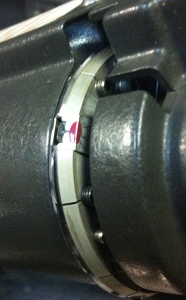
The story of the development of “transverse” scanning is outlined by Fred Pfost, one of the six engineers working on the project.
By March of 1955, results from this approach and improved signal systems were good enough for the team to tell executives they could have a working system in a year.
By April of 1956, there were two prototypes ready for a public debut:
The Mark IV was shipped to Chicago for a surprise showing to CBS network and affiliated station personnel.
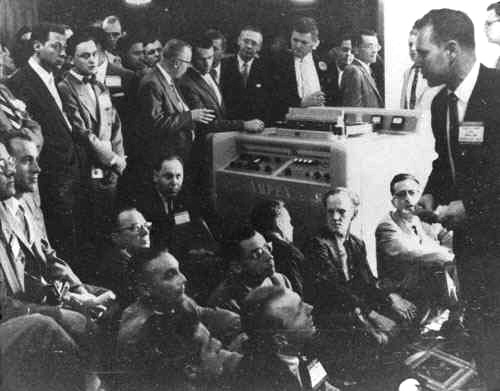
Fred Pfost was one of the Ampex Engineers sent with the machine to set up and operate it.
http://www.youtube.com/watch?v=uNgLs6xjVIs
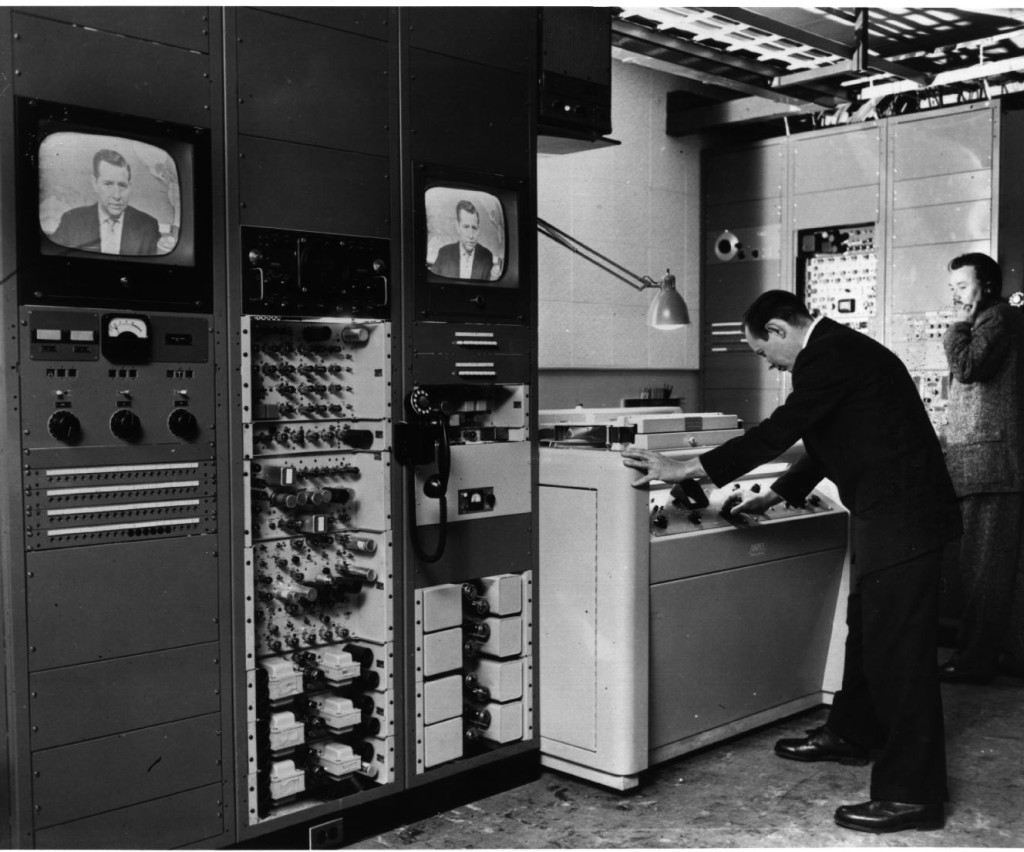
CBS was the first on-air user of the machine, to tape-delay the evening CBS News broadcast with Douglas Edwards on Nov. 30, 1956.The historic recording and playback happened inside CBS Television City in Hollywood, which figures into some significant Quad tape restorations.
Click here to see more about CBS’s early use of videotape.
RCA owned NBC had ordered three of the Ampex machines. Two went to NBC, Burbank. One was sent to RCA Labs in Camden, New Jersey, where RCA engineers designed a method of recording and playing color, an important aspect of RCA’s drive to sell color sets.
RCA’s demonstration of the “colorized” Ampex to Ampex engineers and executives led to a patent cross-licensing deal, which enabled RCA to use Ampex’s technology and make its own video recorders.
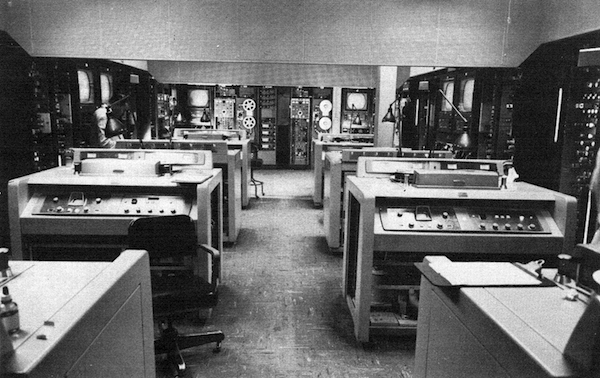
NBC’s Videotape Central debuted on Tuesday, April 28, 1958 inside NBC’s “Color City” at 3000 West Alameda (at Olive Ave.) in Burbank. The $1.5 Million facility sported eight RCA modified Ampex VR-1000 recorders and one RCA TRT-1C color recorder.
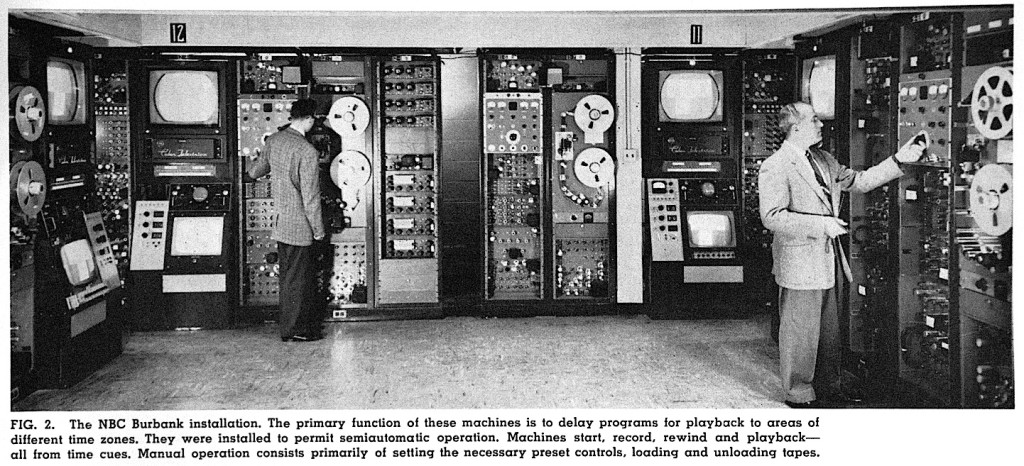
By 1959, there were more RCA machines in place, and NBC Burbank was pioneering the art of videotape editing, making it a “go-to” location for television production.
Click here to see more about the RCA Television Tape installations in Burbank, New York and WBTV.
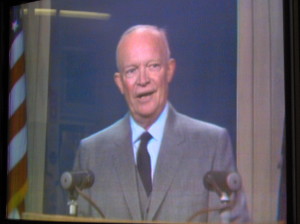
May 22, 1958, President Eisenhower became the first president to be recorded in color on videotape. The president helped dedicate NBC’s brand-new Washington, D.C. facilities housing NBC network and WRC-TV television studios.
A recording given by RCA to the Library of Congress and a perhaps never played Quad tape of this event was located at the Eisenhower Library in Kansas, and is the earliest known color recording discovered to date.
Learn more about the recovery and restoration, here:
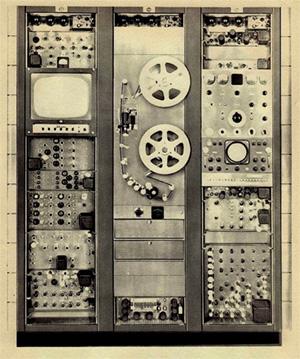
Over the years, the equipment shrank from the six racks used by the RCA TRT-1s (three of the racks shown here)…
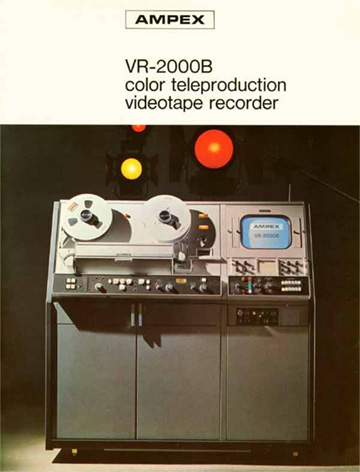
… to three-rack wide self contained systems, with rollers for ease of maintenance or mobility.
The newer recorders offered High Band recording, electronic editing and a host of electronic circuits to record and play the highest quality pictures possible.
Machines like these second generation recorders, and
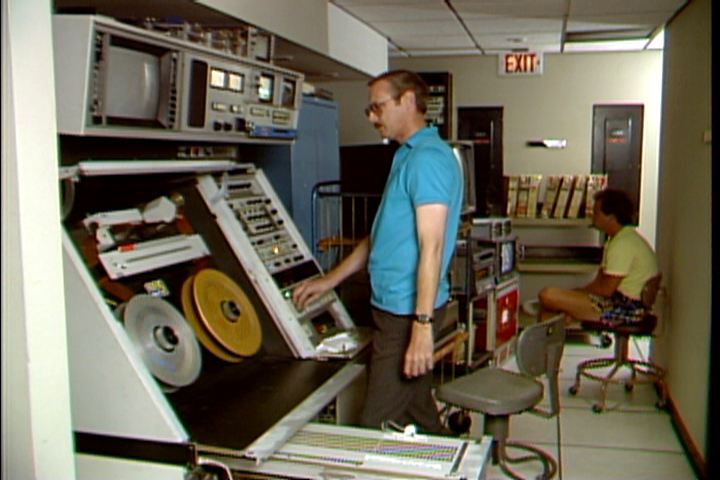
the third-generation units—like this AVR-1 that was used in 1987-88 to recover the earliest color Quad tapes from 1958 and 1959— continue to be used on a daily basis for transfer of Quad video recordings to other media.
Here are catalog sheets for 3M Scotch brand Helical Scan tape from 1970.
When playing Videotape Detective, these types of sheets are useful for cross-referencing the manufacturer’s label on the bottom of the reel with what type of VTR it may have been used on.
Scotch Helical Tape Sheet-MV21B-Aug-1970.
Shows Scotch 360 1″ and 2″ Helical Scan Tape.
1″ for Ampex VR-4000, 5000, 6000 and 7000 series, Sony EV 200 and 300 series, 2″ tape for Ampex VR-1500 Series, 660B, Sony PV 100 and 120 series.
Click here to view: Scotch Helical Tape Sheet-MV21B-Aug-1970-
Scotch Helical Tape Sheet-MV22-A-Aug-1970.
Shows Scotch 361 and 363 1/4″, 1/2″ and 1″ Helical Scan Tape.
1/4″ for Roberts VTR-1000 Series, 1/2″ for Sony, Panasonic, Concord, Norelco, Apeco, Shibaden, GE, Bell and Howell, Craig, Diamond Power, 1″ for IVC, Bell and Howell, RCA, GPL, Chester, Panasonic, Craig, Diamond Power and Shibaden.
Click here to view: Scotch Helical Tape Sheet-M-V-22A-Aug-1970
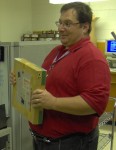
The content you may have helped record decades ago may not be seen again if the equipment can’t be kept operational and people trained how to safely transfer the content to new media.
Sometimes knowing when and where to tap, tweak or whack got the job done. Knowing the idiosyncracies of equipment shortened the time to find and fix a problem.
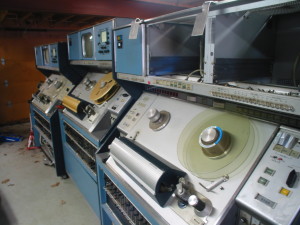
Your knowledge and expertise in operating and maintaining Quad video tape equipment is invaluable and may be lost forever if not preserved.
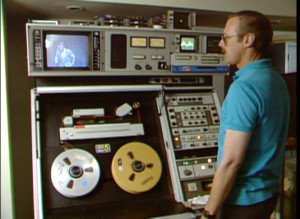
If you can write, record or demonstrate those kinds of things, we’d like to help preserve them to train future generations of tape operators and maintenence engineers.
There are a number of ways to share what you have.
Some you may be able to do on your own, using your computer to document the things you did or do to keep Quad’s purring along.
If you have access to working Quad decks and a camcorder, it may be possible for you to record specific tips, procedures and techniques.
If you’d be happy to demonstrate or be recorded but don’t have equipment, we may be able to arrange a time and location.
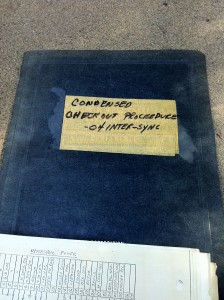
If you have physical items like manuals, documentation, alignment and training tapes, programs recorded on Quad and other materials related to Quad videotape, please contact our webmaster to see what would be the most effective way of sharing them.